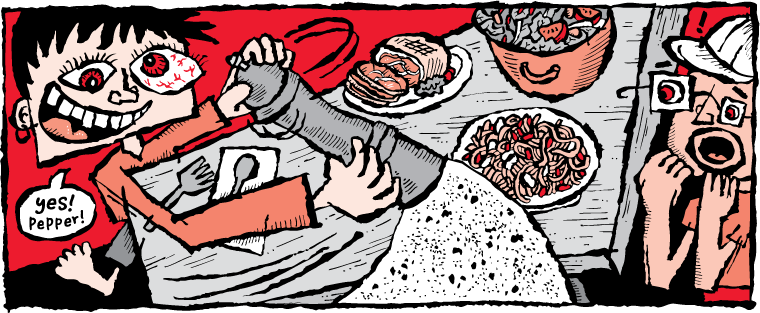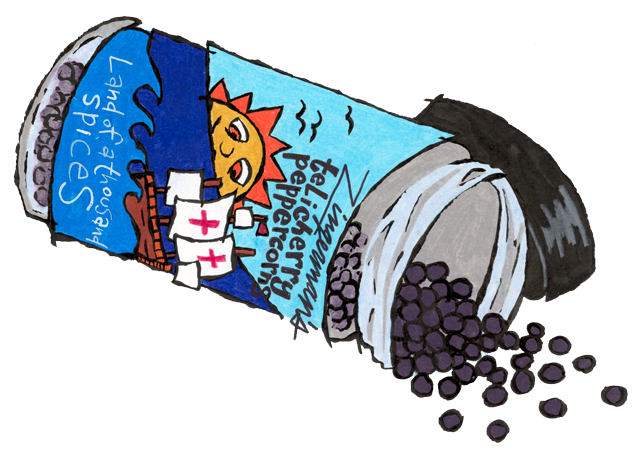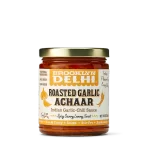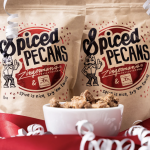A Rumination on Pepper

A word about pepper
Writing about spices, for me, is a particular challenge. I could write ten words and be done with it:
“Use them skillfully. And they will enrich and enhance your life.”
Or I could write ten thousand and not even give you a small whiff of the aromatic and rich world of spices. If I knew enough to write ten thousand words that is.
The story of spices is as rich and varied and fabulous as the spices themselves. Countless words have been written about spices. For millennia, spices have been used as medicine, as trading commodities, as preservatives, as flavoring agents and, of course, as aphrodisiacs. Every book I have read has opened doors to new worlds, waiting to be explored. Wars have been fought over spices. Kingdoms lost and won. Populations enslaved or enriched. Lives destroyed. New territories discovered. And if there is one spice that encapsulates all that spices have meant to the world and its history, it’s Pepper.
Kerala — A Peppery Paradise
Black Pepper. Piper nigrum. In my mind, black pepper is and will always be the Queen of Spices. Historians will tell you that those tiny, black, gnarled peppercorns were the reason that Christopher Columbus and Vasco Da Gama set sail from their homelands. They wanted to discover the Spice Islands in the mystical East so they could break the monopoly of the Middle East (and Venice) over the very lucrative spice trade that had existed from the times of the early Roman Empire through most of the 16th and 17th centuries. Christopher Columbus, as you know, discovered America. Vasco Da Gama opened the doors to the first Portuguese colony in India. The discovery of the land I emigrated to, the colonization of the land of my birth — even being so inextricably linked to my history and culture, black pepper is magical to me mostly because of its flavor.
One of the oldest and most famous sources of black pepper is the Malabar coast. Part of the unique state of Kerala, Malabar is a sliver of immaculately beautiful and verdant coastline on the western side of the Indian peninsula.
May I digress about Kerala for a mere moment? One of the smallest states in the South of India, Kerala, besides it’s astounding beauty, is known today for having exceptionally high levels of literacy and for the significant amounts of foreign exchange it brings in through the export of spices. It is also known historically because its ruling families were matriarchal — a true rarity for Indian culture (or any culture in that era). Kerala elected the first Communist government of the free world. And a final historical note to bring us back full circle to the Deli — the Hindu rulers of Kerala have for centuries welcomed and provided refuge to Christians, Muslims and Jews. Jews have been recorded in Kerala as far back as 68 AD and Cochin, a real haven for the Jews has a synagogue that dates back to 1568 AD. But I have digressed enough.
The Truth about Pepper — Black and White
At Zingerman’s Deli (and Mail Order), we have pepper from Tellicherry and from Wynad. Tellicherry is on the coast, Wynad (or Wayanad) is slightly south and a little inland of Tellicherry. It lies in a plateau in the Western Ghats, the mountain range that separates much of the Western coast of India from the central plateau. Tellicherry is sharper, more pungent and intense, it is more aggressive in it’s approach. The Wynad black pepper is almost citrusy in the beginning and has higher aromatic notes with an intense spiciness that builds slowly in intensity.
The citrus characteristics of the Wynad black peppercorns show even more in the white peppercorns from the same region. And what is white pepper, you ask? Although the source of much misinformation, including treatises from the fourteenth century which insist that black peppercorns were black from the smoke and flames of fires set by people to drive away the poisonous serpents that protected the pepper vines, the explanation is quite simple and significantly less violent.
Pepper berries which have been picked when they are mature but still green (just before they turn red) and then dried in the sun or in kilns, turn black and become a little shriveled to give us the black peppercorns we know and love. To produce white peppercorns, the berries are picked when they are fully ripe and soaked in water for almost a week (a process that is sometimes referred to as “washing”), the outer covering or husk loosens and is easily removed by threshing, exposing a gray inner seed that turns white when it is dried.
Long Pepper Love
 And if we are to travel to Indonesia, I must tell you about long pepper – Piper Longum. In the strange connections that I mentioned earlier, Long Pepper originated in north-east India, from the southern edge of Nepal, home to the Himalayas, to Bengal and Assam. It was transplanted to Kerala many centuries ago. It’s appearance in history is much, much older than black pepper — it is mentioned in the Yajurveda and Atharvaveda — Hindu texts that are thought to date back to somewhere between 500-1000 B.C. From being the most precious of Indian exports for two thousand years, reaching Greece as early as 4th century B.C., to the frustrations of the Dutch East India Company, who developed the native species of long pepper (Piper retrofractum) on the colonized island of Java in the hopes of much profit only to discover that it had fallen out of vogue in Europe, to unexpected references in Amelia Simmons’ 1796 edition of American Cookery in a recipe for pickling cucumbers, long pepper has had a dramatic journey. No matter — thanks to Ben and Blair Ripple from Big Tree Farms in Bali, we have Long Pepper from Indonesia — harvested from the wild forests of the mountainous central highlands of Bali.
And if we are to travel to Indonesia, I must tell you about long pepper – Piper Longum. In the strange connections that I mentioned earlier, Long Pepper originated in north-east India, from the southern edge of Nepal, home to the Himalayas, to Bengal and Assam. It was transplanted to Kerala many centuries ago. It’s appearance in history is much, much older than black pepper — it is mentioned in the Yajurveda and Atharvaveda — Hindu texts that are thought to date back to somewhere between 500-1000 B.C. From being the most precious of Indian exports for two thousand years, reaching Greece as early as 4th century B.C., to the frustrations of the Dutch East India Company, who developed the native species of long pepper (Piper retrofractum) on the colonized island of Java in the hopes of much profit only to discover that it had fallen out of vogue in Europe, to unexpected references in Amelia Simmons’ 1796 edition of American Cookery in a recipe for pickling cucumbers, long pepper has had a dramatic journey. No matter — thanks to Ben and Blair Ripple from Big Tree Farms in Bali, we have Long Pepper from Indonesia — harvested from the wild forests of the mountainous central highlands of Bali.
What can I tell you about Long Pepper? For me, it will forever be associated with the absolute pleasure of discovering an entirely new spice as an adult. When I first saw it, I was able to summon up the word for it in my native tongue, Marathi, but the flavor remained elusive. Long pepper is beautiful to look at — it looks like slender, elegant pinecones, about an inch long. Snap one in two and the inside is a cluster of tiny seeds, almost reddish in hue. The taste is hard to describe. The same familiar spicy intensity of black pepper (which comes from the alkaloid piperine, common to most peppers, if you must know), long pepper has subtler aromas and brings to mind faraway memories of other spices — mace, cinnamon… I know that description is of no use. So I will say this: Taste it. You must. And then keep it alive. Let’s write another chapter in the long and troubled history of Long Pepper. It’s resurgence in the 21st century!
How do I use pepper in my kitchen?
I use freshly ground Black Pepper on steaming hot bowls of spaghetti (try Martelli spaghetti, it’s amazing) with nothing more than some good extra virgin olive oil and parmigiano reggiano. A dinner that is incredibly easy to make and yet has astounding amounts of flavor. Or the next time you make rice, fry some whole black peppercorns in a little butter. Add the rice, uncooked and washed, and fry for a minute or so in the same seasoned butter. Then add water and cook as usual.
Grilled or roasted fish, like salmon or halibut, are great with fresh ground White Pepper. A little squeeze of lime juice to bring out the citrusy notes in the white pepper, sprinkle some freshly chopped parsley or cilantro on top and voila!
Long Pepper. I’m still learning how to use Long Pepper and I am yet to find a dish I don’t think is enhanced with a little Long Pepper (can you tell I’m in love). The other day, I sprinkled some on a bowl of Anson Mills Grits, with a little bit of melted butter and it was the breakfast of champions. I’ve tried it on pasta, on grilled mackerel, on Anson Mills Carolina Gold Rice, on…
Mostly what I’m saying is use them boldly, use them well and let your palate and kitchen get accustomed to them. They will serve you well.
Spice Tips
 And now I must stop. But before I do, I want to share with you a few things I’ve learned growing up in the “Spice Islands” of the East. Things I did not know I knew about spices.
And now I must stop. But before I do, I want to share with you a few things I’ve learned growing up in the “Spice Islands” of the East. Things I did not know I knew about spices.
- Use them whole as often as you can. Powdered spices lose their flavor much faster than whole ones.
- Use them fresh. If you’re grinding them, grind them just before you use them. The aroma will be amazing. A good old mortar and pestle is a good tool to use for this. We have lovely marble ones from Roi at the Deli. Zassenhaus makes really good grinders with ceramic mechanisms. We have a couple of different sizes of those in the Deli as well. A last tip about freshness, if you are compelled to use a whole spice you think has gone stale, toast it slightly. It will wake up.
- Be bold. Spices are your friends. They will enrich your lives. And yes, your food. And sometimes you will get it wrong and it’s okay — because then you will know them better and learn to respect them — each in their own way.
- Know their nature. They are like your friends. Some are sweet, like cinnamon, even when used in a savory context. Others, overused will turn bitter, like cloves; and yet others, like black pepper, will overwhelm all else.
Using spices well is like gestalt, the sum of the parts will add up to more than the whole. It’s a very rewarding experience.





Zingerman’s Art for Sale